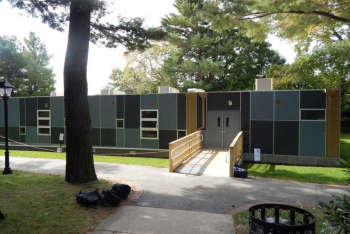Photo: Laurie Slap.
After serving two terms on the Belmont School Committee – including two years as its chair – Laurie Slap believes it’s a good moment to exit, stage left.
“I’ve had a fabulous six years on the committee and that’s the right amount of time,” said Slap, who announced Tuesday night, Feb. 2, after the Belmont School Committee meeting that she was “retiring” from the committee when her term expires in April.
Slap, who came to the board in 2010 after leading the effort to pass the debt exclusion for the Wellington Elementary, said one of her highlights from her tenure as chair was passing the $4.5 million Prop. 2 1/2 override in April 2015 that provided the school district with the necessary funds to meet the challenges of exploding district enrollment.
“[The committee] was so excited to make the case that the schools needed resources and the override passing with the margin it did was a big one,” the Long Avenue resident said.
The other high-water mark was updating the district’s statement of interest to the Massachusetts School Building Authority to renovate and add new construction to Belmont High School. Those efforts came to fruition last week when the MSBA selected Belmont to begin the process of modernizing the nearly 50-year-old school. Slap was in attendance with Superintendent John Phelan and Belmont High Principal Dan Richards when the announcement was made by the MSBA in Boston.
“That’s a nice way to wrap up my time here,” she said.
Slap noted that with her and member Laurie Graham’s departure late last year in addition to Elyse Shuster’s decision to give up her full-term seat to run to complete the one year remaining in Graham’s term, there are two three-year seats vacant on the committee to be filled in April and no incumbent running to retain a current position.
As of Thursday, Feb. 4, only one resident has taken out nomination papers for the two seats.
“[The School Committee] is a fabulous group and everyone who is associated with it, from the administration to the teachers, the students and parents,” said Slap.
“I highly recommend anyone who is looking to get involved with the town to consider running,” she said.
